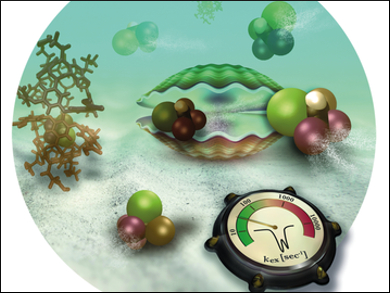The dynamic properties of supramolecular containers can be useful for applications such as controlled drug release. However, quantitative data about the kinetic phenomena occurring within such assemblies is not readily available using standard analytical tools.
Bruce C. Gibb, Tulane University, New Orleans, LA, USA, Amnon Bar-Shir, The Weizmann Institute of Science, Rehovot, Israel, and colleagues have developed a nuclear magnetic resonance (NMR)-based tool to evaluate the exchange rate of fluorinated molecular guests encapsulated by a dimeric octa acid (OA) container.
The so-called GEST (guest exchange saturation transfer) method allows the quantitative analysis of dynamic exchange processes for various guests. The method can detect complex formation that cannot be observed using standard 1H and 19F NMR spectroscopy and can amplify NMR signals of otherwise undetectable peaks.
Fitting of the obtained experimental spectra using Bloch–McConnell simulations allowed the researchers to determine exchange rates for a series of host–guest systems across a wide range of 35–5000 s−1. This approach could provide a better understanding of supramolecular assemblies.
- Quantifying Guest Exchange in Supramolecular Systems,
Liat Avram, Anthony D. Wishard, Bruce C. Gibb, Amnon Bar-Shir,
Angew. Chem. Int. Ed. 2017.
DOI: 10.1002/anie.201708726



